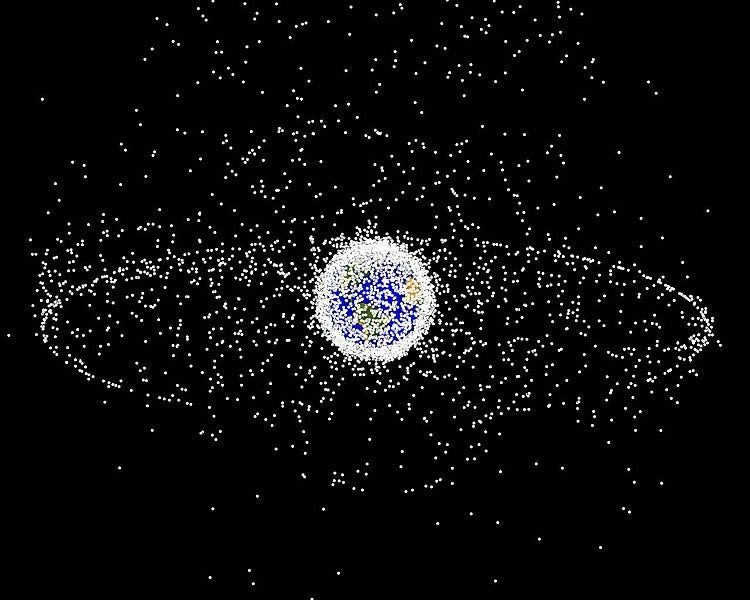The Increasing Challenge of Space Debris: A Looming Crisis
Written on
Overview of Space Debris
While the Great Pacific Garbage Patch is often cited as Earth's largest trash pile, an equally concerning accumulation exists in our orbit. The issue of space debris is escalating, threatening everything that orbits the Earth and potentially hindering future space exploration.
Currently, NASA reports over 500,000 fragments of debris in orbit, with pieces measuring at least half an inch. The European Space Agency suggests that the actual number of smaller debris could be around 900,000, creating substantial risks for satellites, space missions, and any future launches.
The Growing Problem of "Space Junk" This video explores the increasing concern of space debris and its implications for space missions and satellite operations.
The Nature of Space Debris
The debris in orbit includes defunct satellites, lost bolts, and remnants from outdated rockets. Although many items disintegrate upon re-entering the atmosphere, numerous fragments continue to orbit Earth. Traveling at speeds exceeding 17,000 miles per hour, these pieces pose a significant risk to any spacecraft they encounter, making retrieval efforts nearly impossible.
The saturation of certain orbital zones makes them hazardous for new satellites. Placing a costly satellite in these areas could lead to its inevitable destruction due to potential collisions.
Historical Context of Space Debris
The accumulation of space debris can be traced back to the 1960s and 1970s when leftover propellant in spacecraft tanks would eventually combust, sending fragments into orbit. By the 1980s, NASA successfully encouraged international partners to empty propellant tanks before decommissioning satellites, which helped mitigate the issue. However, two significant incidents in recent years have exacerbated the problem.
In 2007, China intentionally destroyed an obsolete weather satellite, while in 2009, a US satellite collided with a defunct Russian satellite, resulting in the creation of approximately 5,000 new debris pieces measuring over four inches. This influx accounted for a third of the existing space debris by size.

Monitoring Space Debris
The US Department of Defense primarily tracks larger space debris, while other organizations utilize telescopes and radar for smaller fragments. NASA's Orbital Debris Program is tasked with assessing risks from this debris and predicting potential collisions.
While some debris in low-Earth orbit will eventually burn up in the atmosphere, others remain in higher orbits for extended periods. The ongoing accumulation of space debris has raised concerns since 1978, when NASA scientist Donald J. Kessler proposed the Kessler Syndrome. This theory suggests that increasing densities of objects in low-Earth orbit could lead to a chain reaction of collisions, ultimately rendering low-Earth orbit inaccessible for new spacecraft.
Accidental Losses in Space
Space debris has accumulated not only through intentional actions but also through accidental losses during missions. Notable examples include Ed White's glove during the first American spacewalk and Sunita Williams losing a camera during a shuttle mission to the International Space Station.
One of the most significant incidents occurred in 2006, when astronaut Heide Stefanyshyn-Piper lost a tool bag during a spacewalk. An exploding grease gun inside the bag caused it to float away, taking essential tools with it.
The Need for Solutions
Currently, the technology required to effectively manage and eliminate space debris is lacking. Efforts to retrieve debris are costly, and capturing small, fast-moving pieces remains a challenge.
Proposed solutions include using lasers, nets, or specially designed sails to collect space debris. However, as of now, no effective cleanup strategy has been implemented. The looming threat of the Kessler Syndrome could halt satellite launches and space travel altogether, emphasizing the need for innovative solutions.
Human-Made Debris: A Growing Problem This video discusses the impact of human-made debris in space and the urgent need for effective management strategies.
A Final Note on Space Debris
The oldest piece of human-made space debris is Vanguard I, launched by the United States on March 17, 1958. It has been orbiting Earth for over 60 years, having ceased transmission in 1964.
For more intriguing facts, check out Knowledge Stew’s Fact World on Medium.
